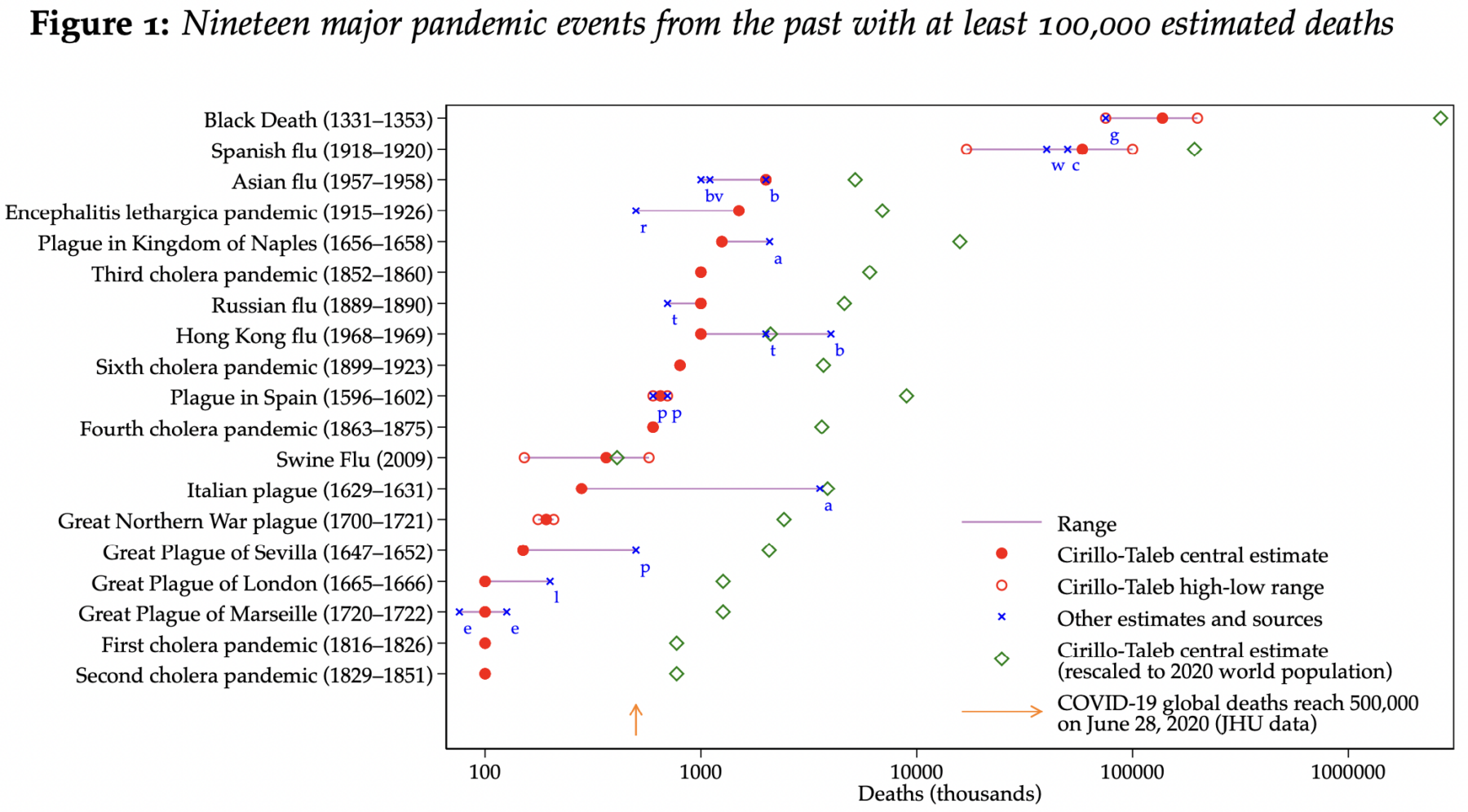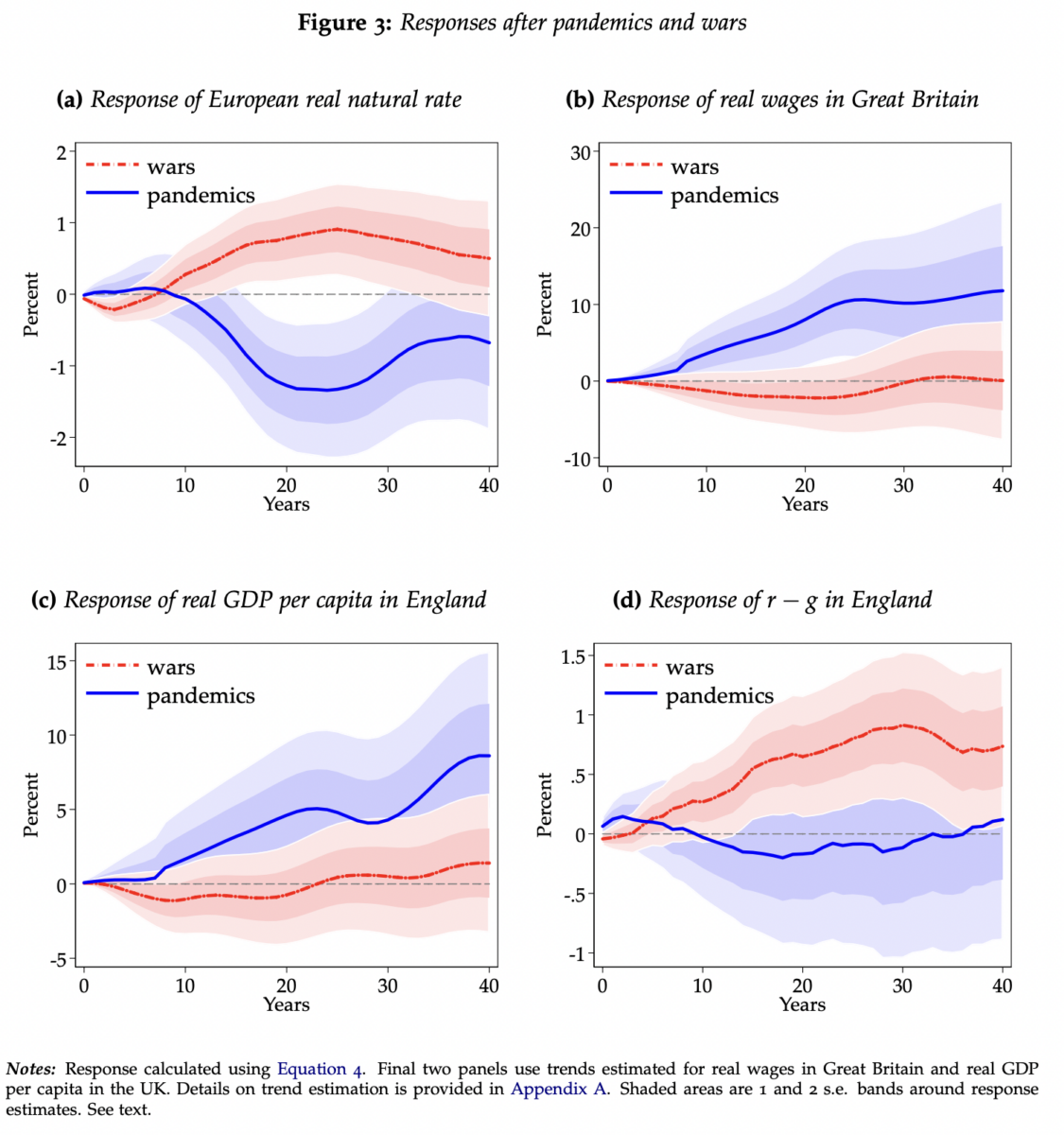
I was speaking with my fishing buddy David Kotok recently about a research project he has been working on: “What are the long-term economic consequences of pandemics?” His research goes back to the ancient Greeks, and I’ll post something when his paper comes out. But Kotok pointed me towards a fascinating white paper from the Federal Reserve Bank of San Francisco, which studied the impact of 19 pandemics stretching back to the 14th century.
What did they find?
“Significant macroeconomic after-effects of pandemics persist for decades, with real rates of return substantially depressed, in stark contrast to what happens after wars. Our findings are consistent with the neoclassical growth model: capital is destroyed in wars, but not in pandemics; pandemics instead may induce relative labor scarcity and/or a shift to greater precautionary savings.”
This is not hindsight bias, but rather, what the FRBSF published in June of 2020, long before wages rose significantly and labor became as scarce as it is today. They considered such varied elements as Death tolls, Rates of return on assets, Real wages, Interest rates, Saving rates, Real GDP per capita, Debt sustainability, and other elements.
If you are so inclined to consume working papers in all their wonky goodness, then by all means, please do. But if you prefer the TL:DR version, it looks something like: Lower returns to assets, Rising real wages, Increased public debt, and Reduced national savings rate.
The most intriguing aspect is the rising real wages. Historically, pandemics created a shortage of workers: in part from the overall death toll, but from other factors, which we have discussed previously: Decreased immigration, workers forced out of the labor pool to care for children, early retirement, fear of catching the disease, etc. All of this contributes to a reduced total number of people in the Labor Force, and that supply contraction sends wages higher (apologies for these kinds of descriptions).
~~~
The authors take pains to point out that there are many dissimilarities between the current pandemic and those from the past — in particular, the death toll of the current COVID-19 pandemic relative to the total population. Vaccines and other pharmaceutical interventions should prevent this pandemic from looking like the worst of prior pandemics (which themselves are very different from previous wars, as the chart below shows).
Interesting stuff . . .

Previously:
COVID Deaths Per Million (July 2020-Present) (January 9, 2022)
The Economic Risks from Anti-Vaxxers (July 15, 2021)
DELTA is Coming For Your Economic Recovery (August 13, 2021)
Source:
Longer-run economic consequences of pandemics
OscarJorda, Sanjay R. Singh and Alan M. Taylor
Federal Reserve Bank of San Francisco, June 2020
https://doi.org/10.24148/wp2020-09

